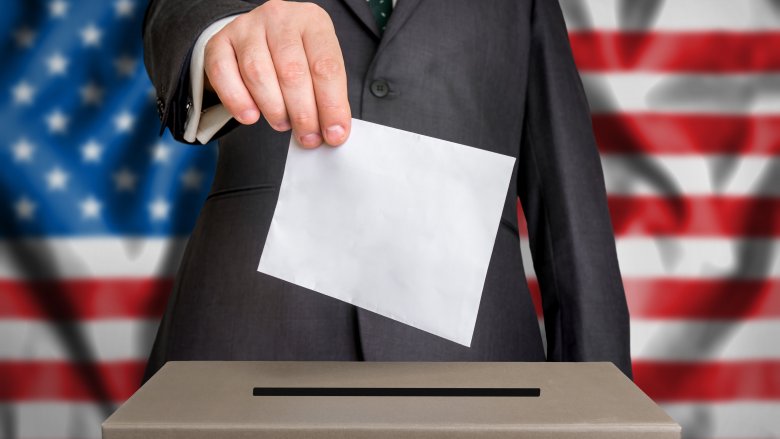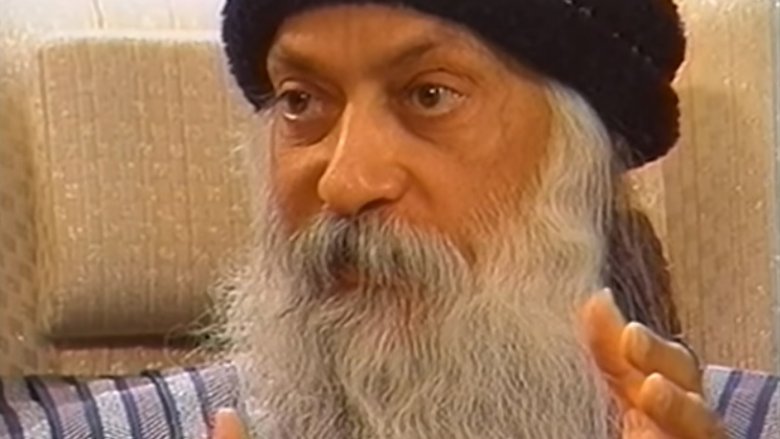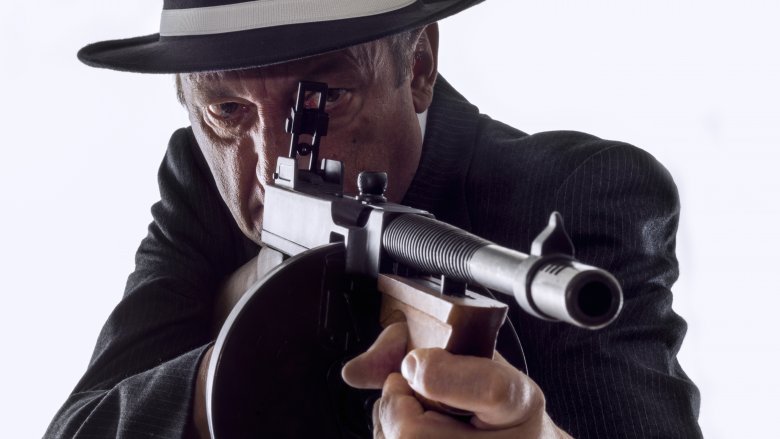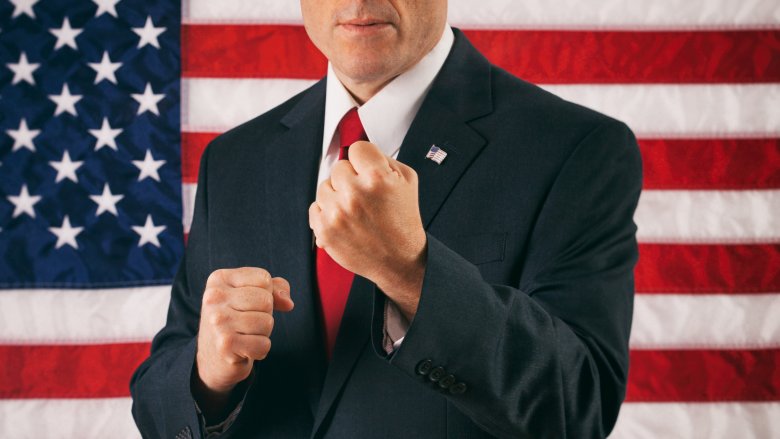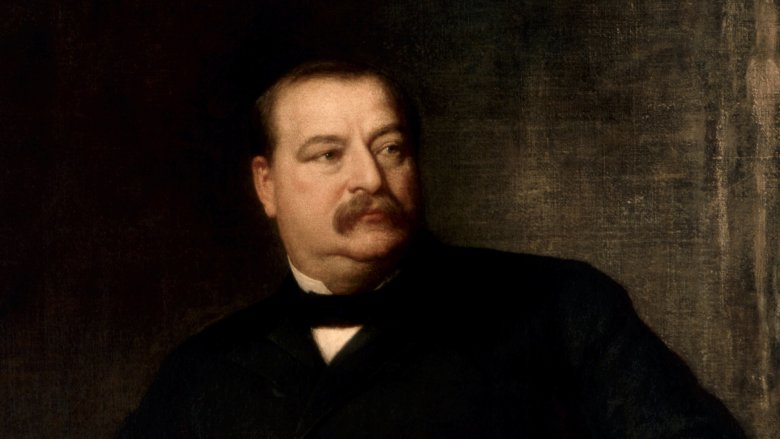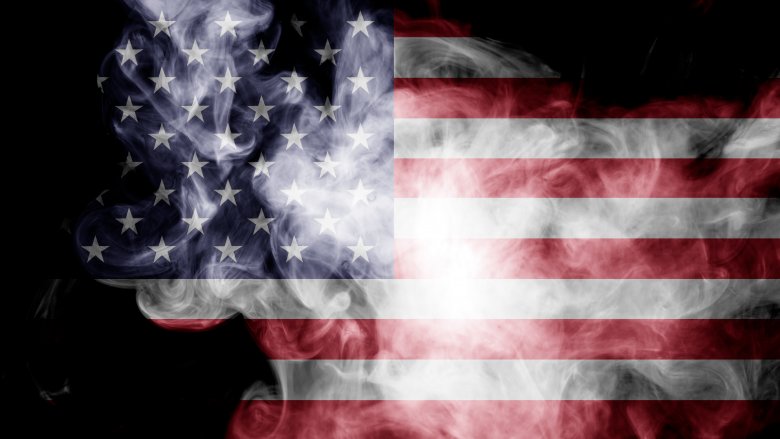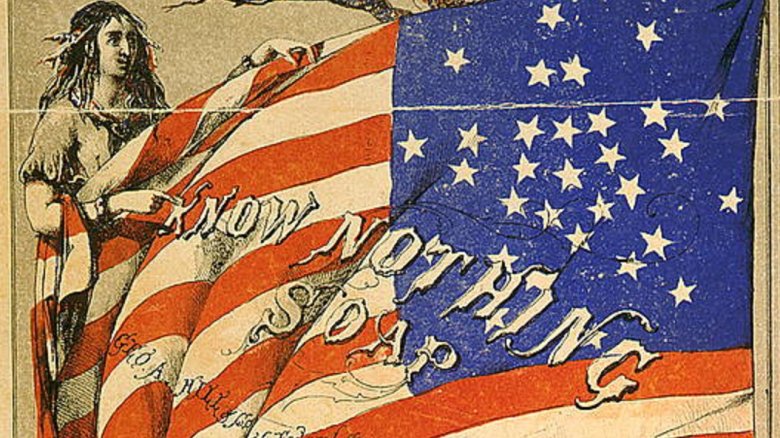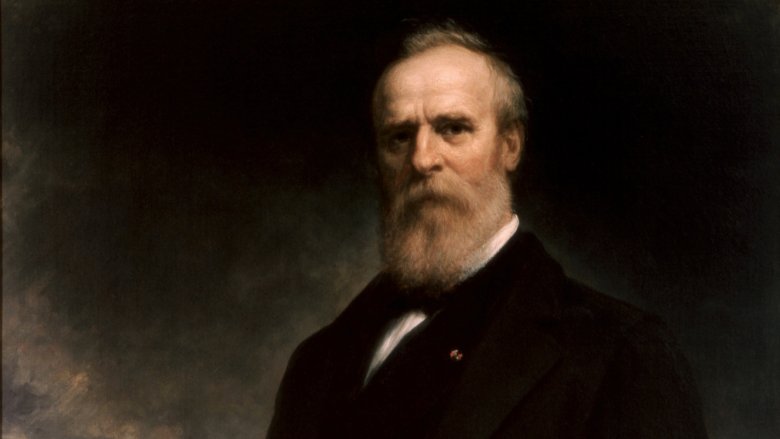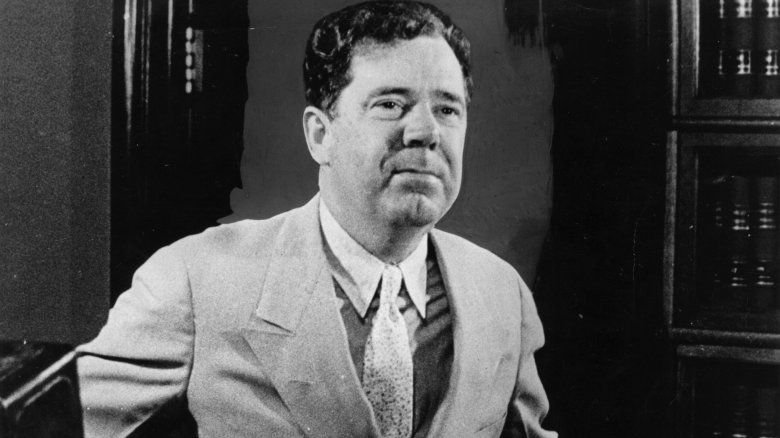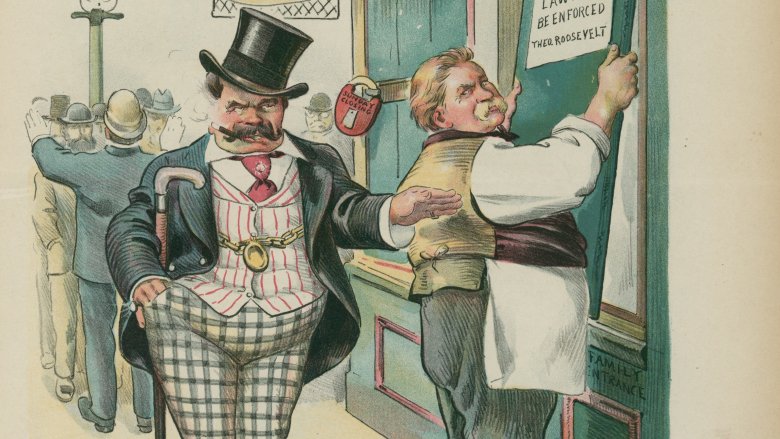The Craziest Cases Of Election Fraud In U.S. History
Integrity and American politics go together like peanut butter and peanut allergies. Because who better to govern the Land of Opportunity than opportunists? Politicians turn amber waves of grain into grains of truth in a sea of lies. Lamentably, many voters may not mind. Psychological research suggests that people knowingly embrace baloney that bolsters their beliefs but reject bitter truths. As political science professor Monika McDermott observed, "It's not just about whether a politician is lying or not. It's whether he's lying on my behalf." Since politicians shower the public with hogwash while their supporters sing the rain, you might suspect that elections are drenched in deception. Heck, the phrase "voter fraud" has practically become a mantra. However, the facts say otherwise.
Although many candidates lie like counterfeit rugs, voters consistently stand up to scrutiny. For instance, of the over 135 million votes cast during the 2016 presidential election, only four votes proved fraudulent. Furthermore, the Washington Post noted, that between 2000 and 2014 just 31 out of 1 billion ballots constituted credible cases of voter impersonation. The fakest thing about America's voters is the claim that they're fake. That doesn't mean voter fraud doesn't matter, but nowadays it's rarer than raw beef. Compared to the insanity of the past, modern U.S. elections drip honesty like truth serum. Here's what real election fraud looks like.
Mystic rigger
Oregon is synonymous with trailblazing. Nineteenth-century pioneers braved deadly blazes on the Oregon Trail. The game Oregon Trail made players want to set it ablaze whenever their oxen died. And the Rajneeshees blazed Oregonians' entrails in a twisted plot to rig an election through food poisoning.
As The Guardian detailed, Bhagwan Shree Rajneesh (above) was an Indian mystic who loved free love. He had thousands of orange-clad disciples called Rajneeshees who, according to a former follower, freely loved each other "all night, like mating baboons." India's government didn't love them, though, because in 1981 Rajneesh and the citrus-colored humpers were essentially chased from the country. They went to Oregon and went crazier.
The Atlantic elaborated on the cult's antics, which included becoming elected officials in a town called Antelope and renaming the city Rajneesh as well as naming a recycling center after Hitler. They also wanted to construct homes in Wasco County for their ever-expanding group, but officials balked. So in 1984 Rajneeshee leaders tried to win Wasco County elections by preventing residents from voting and forcing homeless people to vote instead.
The cult contaminated restaurant salad bars with salmonella-laced liquid, sickening 751 people. It marked the largest bioterror attack in U.S. history. Moreover, the Rajneeshees bussed in over 2,300 homeless people whom they blindfolded and drugged with tranquilizer-infused beer. State officials quickly noticed the avalanche of suspicious voter registrations and shut that chicanery down. Three Rajneeshees did prison time and got deported. Rajneesh also got the boot.
The strong harm of the law
In the 2002 case Detroit Free Press vs. Ashcroft, Appellate Judge Damon Keith opined, "Democracies die behind closed doors," further observing, "the Framers of the First Amendment 'did not trust any government to separate the true from the false for us.'" Keith was orally spanking Uncle Sam for holding deportation hearings in secret, but his heinie-hammering words hold equally true for elections. A government that can hide votes can revise votes. That's why when a group of World War II veterans witnessed sheriff's deputies duplicitously concealing ballot boxes, they dropped the hammer.
It was 1946. Numerous U.S. troops had returned home from the war to find political bosses in charge. The South had gone south, per the Tennessee Encyclopedia. In Athens, Tennessee, a city that shares its name with the birthplace of democracy, votes no longer counted. Senator and former Sheriff Paul Cantrell called the shots. As the Tennessee Library and Archives described, Cantrell imposed a system whereby cops financially profited from the number of arrests they made.
Vexed veterans formed the Nonpartisan GI League and challenged Cantrell in the 1946 election for sheriff. But dishonest deputies blocked and battered veterans who attempted to vote. When the officers hauled ballot boxes to the jailhouse to stuff them, the GIs snapped. Hundreds rioted. Some ransacked the National Guard Armory, and a jailhouse shoot-out ensued. After several hours the cooked cops cried uncle because the GIs dynamited the jail's porch. Victorious veterans torched cars, and the cops left Athens.
Kansas Seedy, Missouri
Everybody knows success isn't about what you know, but who you know. Harry Truman knew how true that is because the future U.S. president landed his first job in politics due to fortuitous ties to a political boss. Per the Kansas City Public Library, Truman fought in World War I alongside the nephew of Tom Pendergast, an unelected Kansas City official who held so much sway in Missouri that the governor's mansion was nicknamed "Uncle Tom's Cabin."
Pendergast was a brawler, a businessman, and the brother of Kansas City's previous political boss. He cut deals with the Mafia, got cuts of the profits from multimillion-dollar government projects, and cut people off at the knees when they got in his way. He bent elected officials to his will and curried favor with constituents by pushing for popular initiatives. But he also pushed residents around. His hardest push occurred during 1934's "Bloody Tuesday" elections. The New York Times reported that Pendergast goons used machine guns, blackjacks, and pistols to win over voters. Four people died, 11 were critically wounded, and over 200 were assaulted.
In 1936 Pendergast's posse went a less crimson route, registering up to 80,000 dead, sick, or nonexistent voters. A federal attorney revealed that in one ward, Pendergast candidates won by a ratio of 1,469 to 1. Federal agents pored over 12 tons of ballots and documents and began dismantling Kansas City's political machine.
Vice-a-Roni: the San Francisco Cheat
San Francisco: the city so rich it created fortune cookies. Today you know it for Silicon Valley and silicone women, but surly connivers defined it in its infancy. Before officially becoming San Francisco in 1847, the former Mexican territory lacked laws and lawmen, according to the San Francisco Chronicle. Unsurprisingly, crooks came to power. By 1856 the place was drowning in a political cesspool headed by Democrat David Broderick. Per SF Gate, Broderick recruited ruffians to corral voters and practiced nepotism. He also employed a ballot box with a hidden partition for phony votes.
Residents resented getting strong-armed, but they were up in arms about the bogus ballot box. A California newspaper called it "a crime of the darkest dye." At least 10,000 indignant residents rallied and railed against the repugnant ploy. The Second Committee of Vigilance, a vigilante collective that sought to solve corruption, resolved to crash Broderick's political party. Up to 8,000 men assembled to round up his operatives and put them on trial. Armies of armed arbiters found the defendants contemptable and booted them out of town on boats.
Broderick fought back with the backing of California's governor, who decreed that San Francisco was in "a state of insurrection" and demanded intervention. A militia mobilized to mow down vigilantes. But the militia's leader, future Civil War General William Sherman, ultimately relented and resigned. After the uproar states began using glass ballot boxes in hopes of avoiding another San Francisco fiasco.
The Indiana pay sirs
Grover Cleveland (above) wasn't a blue Muppet, but Muppet master Jim Henson named a fictional character after him (Rover Cleveland). Cleveland also had a famous daughter, "Baby Ruth," who posthumously ruined Babe Ruth's candy company. He's best known for being the only U.S. president to serve nonconsecutive terms. Yet he may have served his country best between those tenures.
In 1888 Democratic candidate Cleveland lost his first bid for reelection because devoted voters chose his Republican opponent Benjamin Harrison. In fact, they devotedly voted over and over. Per Smithsonian Magazine, back then elections weren't secretive or standardized. In Kentucky, for instance, constituents literally voiced their opinions by voting orally, meaning mutes and mimes likely had no say. Printed ballots, however, made voting too inclusive, and local election officials printed ballots in bulk, paid people to cast them, and patrolled the polls.
Crime paid handsomely in Indiana, where voters didn't have to register. In the 1888 election Hoosiers underhandedly gave Indiana-native Benjamin Harrison a decisive win. Supporters also poured in from Pennsylvania to guarantee victory. W.W. Dudley, Republican National Committee treasurer, openly orchestrated the effort by buying votes and distributing instructions. A steamed Cleveland campaigned for reform, imploring states to implement secret ballots. Dozens did, and Cleveland reclaimed the White House in 1892.
Dust in the win
As the band Kansas poetically put it, "All we are is dust in the wind." Everything we do will disappear in time's dustbin. In 1854, when Kansas wasn't yet a state, there was an ugly dust-up over a now-dead debate.
America was in its geographical adolescence, expanding and experiencing growing pains. Acquiring new territories meant inquiring whether residents would outlaw slavery. Unfortunately, related legislation sometimes fueled unruliness. The Missouri Compromise of 1820 had basically banned slavery in the North. Yet as PBS explained, the 1854 Kansas-Nebraska Act effectively nullified that law by allowing settlers in the area to decide the matter by majority rule. Slavery supporters, abolitionists, and Free Soil advocates (who hated slavery because they hated black people) embarked on a mad dash to dash each other's hopes.
One angry New Englander founded a company premised on sending abolitionists to Kansas to vote against slavery. Meanwhile, Missourians crossed in to Kansas to ensure it legalized slavery. So many outsiders intervened that only half the people who voted in Kansas' first election were registered voters. In one ward, only 20 of 600 votes were cast by Kansans. In an 1855 election fewer than half of the 6,307 voters were registered. The votes overwhelmingly favored slavery. Attempts to contest the outcome led to lethal clashes during an ordeal dubbed "Bleeding Kansas."
The more you Know-Nothing
They were a league of extraordinarily ungentle men. They felt ire toward the Irish, treated Germans like germs, and found immigration immensely threatening. They were the Know-Nothings, a gang of raging nativists who ironically ignored their own foreign origins. Founded in 1849, the group wrapped itself in patriotic language. As National Geographic described, they started as a secret society called the Order of the Star-Spangled Banner and later formed the American Party. The "Know-Nothing" label wasn't an admission of ignorance but an allusion to the group's vow to remain tight-lipped under interrogation. Nonetheless, the Know-Nothings knew nothing about tolerance and showed it in the years before the Civil War.
According to author Frank Marcotte, they politically and physically dominated Baltimore in the 1850s by preventing immigrants from voting or forcing them to choose Know-Nothing candidates. One of their favorite tools was the shoemaker's awl, a lengthy "sharp steel needle" used for piercing leather. Then there were "blood tubs," vats of animal blood that Know-Nothings splashed over immigrants' faces to frighten them from the polls. Know-Nothings also committed "cooping," which entailed imprisoning immigrants in cellars or sheds, getting them drunk, and making them vote repeatedly. Per Humanities Magazine, a single "coop" could contain 90 people.
The vicious vote-rigging ignited outright riots during elections. Baltimore became a city of blood tubs and bloodbaths as political factions attacked each other with firearms, axes, picks, and bricks. The electoral explosions subsided during the Civil War.
Per poll Hayes
When election season rolls around, the A in USA seems to stand for "acrimony." 2016's White House joust featured the two least liked candidates in presidential polling history. A Pew poll indicated that roughly half of Clinton and Trump supporters were more motivated by opposing the other side's candidate than backing their own. However, perhaps America's most divisive competition happened seven score before.
The 1876 presidential showdown got low-down and beyond dirty. Democratic candidate Samuel Tilden squared off with Republican Rutherford Hayes (above) in what Smithsonian Magazine deemed "the ugliest, most contentious and most controversial presidential election in U.S. history." Lye-like insults corroded goodwill. Tilden was branded a briber, boozer, and syphilis sufferer. Republicans received criticism for the Grant administration's alleged corruption. Meanwhile, Civil War wounds festered. Ex-secessionist states opposed occupation by federal troops and resisted Reconstruction-era laws that empowered blacks.
Ballot battles raged as mass misconduct marred the voting process. As the New York Times detailed, both Democrats and Republicans behaved abhorrently. Each side nullified each other's votes and paid to "correct" tainted tallies. Ballot boxes got dumped into bodies of water. Three states submitted multiple conflicting vote counts. Race-based melees broke out in South Carolina as armed whites attempted to suppress black voters, per History. Because of the bedlam, a bipartisan commission convened to decide the presidency. To secure victory for Hayes, Republicans essentially agreed to end Reconstruction, paving the way for former Confederate states to institute racial segregation.
Why the Long farce?
Huey P. Long is a name a school bully might mock with a joke about slow urination. But the Louisiana politician who made that name infamous was associated with far worse. According to The New Yorker, critics derided him as "a counterfeit Mussolini," "an embezzler of the people's money," and "a cad." Nevertheless, Long had the bully pulpit and bully-like tendencies.
After becoming Louisiana governor in 1928, Long jettisoned etiquette and ethics in equal measure. He did interviews in pajamas. He used political kickbacks to publish a newspaper dedicated to discrediting the media. He wrote and signed bills that enhanced his gubernatorial authority. He was even suspected of arranging the abduction of his own newspaper's business manager to stop him from exposing government graft while Long sought a Senate seat. But his most devious feat may have been defeating a crony's opponent with fake candidates.
Long won his U.S. Senate race in 1930 but refused to take office until 1932 so he could handpick his gubernatorial heir — who would repeatedly declare martial law when Louisianans opposed Long. According to the book Kingfish, candidates could nominate five potential election commissioners who were subsequently selected via lottery. Long stacked the deck by funding "dummy candidates" who nominated pro-Long commissioners and then dropped out of the race right before Election Day. Long's pick had the overwhelming advantage and won. Long narrowly survived impeachment proceedings for his incorrigible corruption but was later assassinated.
Hall and votes
If political corruption had a hall of shame, Tammany Hall wouldn't be in it because it would be the hall. The New York cheat machine was smoother than a polished baby bottom. The image of Tammany Hall is intertwined with "Boss" Tweed, who, as History explained, operated the machine between the 1860s and early '70s. But George Washington University noted that the organization's origins date back to 1786. Initially a fraternal society focused on social activities, it became increasingly steeped in politics, establishing itself as a Democratic entity and amassing massive influence when Andrew Jackson won the presidency in 1828.
Tammany politicians became a huge hit with immigrants during the 1830s and '40s because they helped recent arrivals acquire jobs, shelter, and citizenship in return for election votes. Reuters reported that they also provided legal aid for foreigners by bribing officials. However, officials didn't simply ingratiate themselves with immigrants. Slate relates that politicians "imported inmates from the Blackwell's Island Penitentiary" to cast ballots in 1843. Tammany Hall also paid people to vote multiple times, used hired muscle to frighten uncooperative voters, and enlisted illegitimate voters from other cities.
Tammany managed to remain intact until the 1930s, when scandal damaged the organization and FDR entered the White House. A longtime adversary of Tammany, FDR disregarded party affiliation and withdrew federal support for the machine. Furthermore, his New Deal dealt a devastating blow to Tammany's system of vote poaching.
